Washing machine is leaking: causes and elimination of the problem
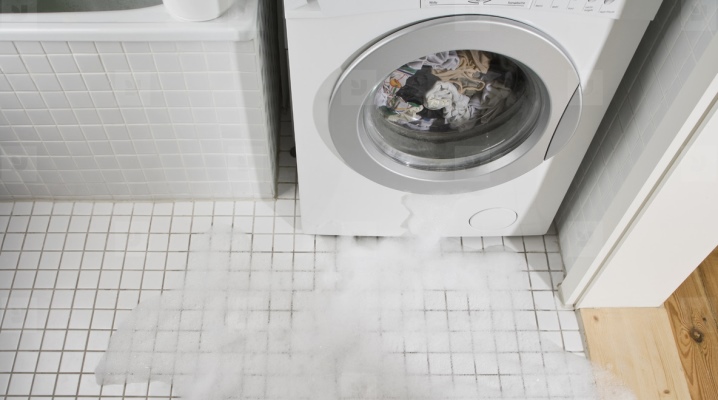
When a washing machine installed at home flows after starting - when drawing water, spinning or draining, it is imperative to find the cause of the problems as soon as possible and eliminate it. The source of the problem during washing can be both the owner's own negligence - incorrect selection of household chemicals, violations of operating rules, and factory defects, as well as failure of the parts inside.
It is possible to identify the exact reasons for the leakage of the machine from the door and the powder compartment, to find damage at the connections with the hoses only through a complete inspection and diagnosis of malfunctions.
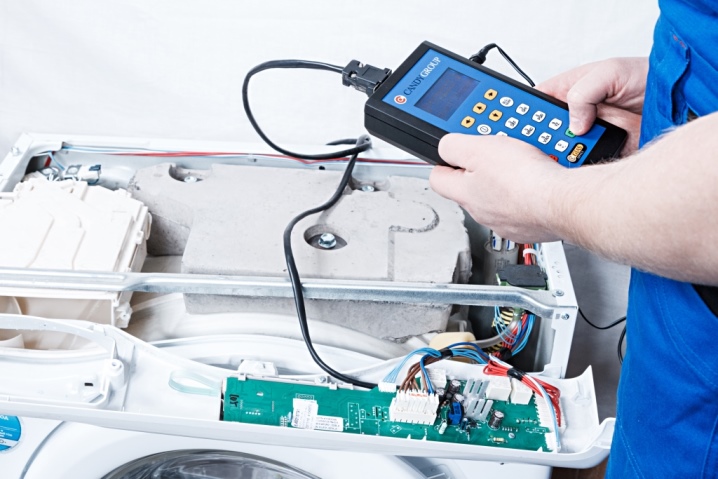
What to do immediately after detecting a problem?
When a leak is detected, it is important to prevent further leaks. When the washing machine is running, it doesn't matter if the drops fall on the floor, or the water has already started running in a trickle, you need to act immediately. The first step is to de-energize the electrical appliance, shut off the water supply using taps, or completely shut off the water supply. After that, you should stock up on rags or sponges, collect the liquid that has already flowed out.
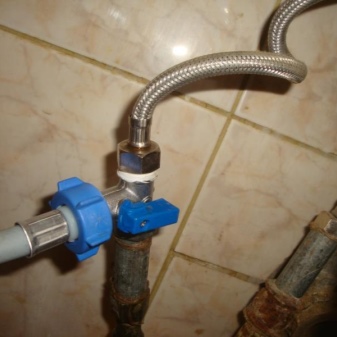
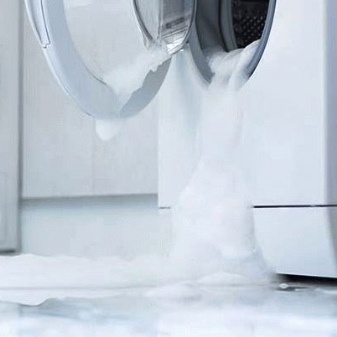
The next step is to visually inspect the washing machine. Some details fall into the area of special attention.
- Hoses. If their integrity is violated or the connection is weakened, water may leak when draining and feeding into the tank.
- Door cuffs... Over time, they can lose their tightness, receive ruptures and other damage. In addition, the problem may be in a manufacturing defect.
- Powder dispenser hopper. This may be due to a clogged dispenser or a broken inlet valve. Sometimes a foreign object gets into the drain, preventing the outflow of liquid.
- Water supply and sewerage pipes. Sometimes the cause of a leak is a banal damage to the water supply system. Corroded pipes, cracked sealant, loose clamps, too high pressure and even accumulated condensation are just a small part of the sources from which puddles appear on the floor under the body of the machine.

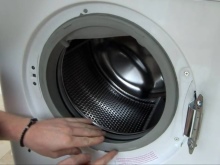
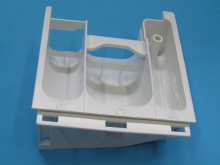
If a superficial visual inspection does not work, you need to go to diagnostics. To do this, you will have to drain the water forcibly through the filter hole, free the equipment from the laundry, and then start looking for the true source of the leak. When eliminating the "accident", it is necessary to completely exclude contact with the contents of the washing machine until it is de-energized.
An electric shock is fatal to a person, and if a short circuit occurs inside the equipment, a breakdown can lead to failure of the electronic control unit.
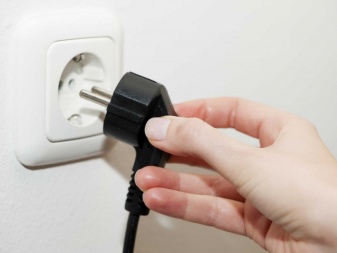
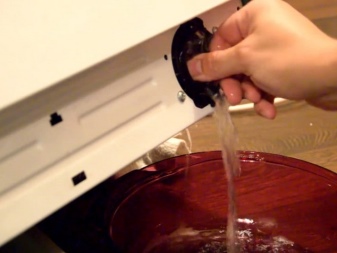
Leakage reasons
To recognize the true causes of a leak, you need to carefully investigate all possible problem areas. Diagnostics is performed after disconnecting the device from the network. It is also better to disconnect the hoses, free up space for moving the unit. There are many reasons for a leak. Here are just a few of them.
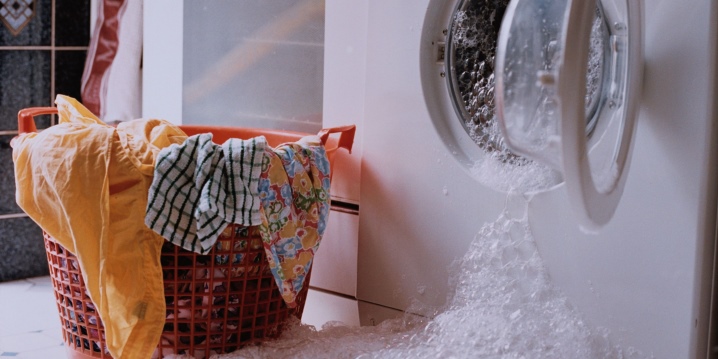
Incorrect operation
It leads to the fact that the washing machine does not start to work at full strength, blockages occur. If you follow all the recommendations for cleaning the filtration and drainage systems, the risks of leaking will be minimal. A problem can arise if the hoses are mechanically damaged. Children and pets can become a source of danger.
If the leak is not under the body of the machine, but in front, you should pay attention to the condition of the cuff. They are the ones who most often suffer from mishandling.
If foreign objects enter the O-ring during washing or is pinched while closing the door, damage will result in leakage.

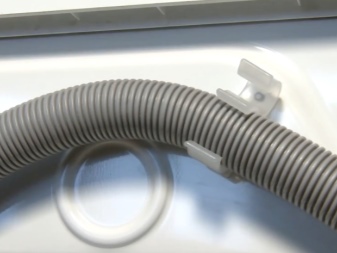
Incorrect selection of chemicals
When an inspection of the washing machine reveals clear signs of water leakage from the powder loading compartment, the cause may not be just a blockage. If too much detergent is added, or if it has a higher foaming capacity than necessary, excess foam will seek out through the joints of the tray.
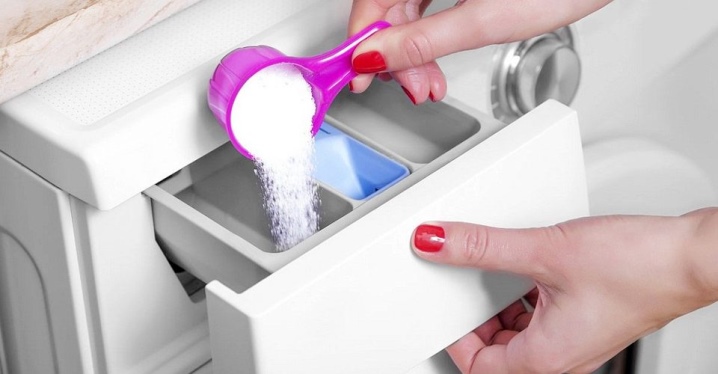
Manufacturing defects
Sometimes washing machines, even those produced by the most famous manufacturers, have a factory defect if the cause of the leak is the failure of one of the system elements. Leakage is most often caused by the installation of low-quality seals and pipes - parts that are quite easily replaced under warranty.
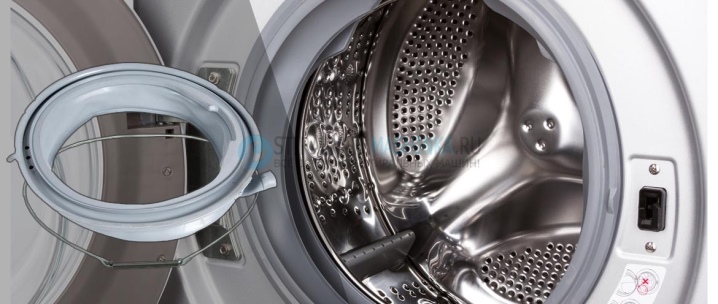
Breakage of parts
As a rule, leaks are associated with the breakdown of parts only if we are talking about a drain system. In this case, a leak will occur during the spinning or rinsing phase, when water is discharged from the system. If the pump is faulty, water will accumulate at the back wall. In the same place, a leak is formed in the event of a malfunction of the oil seals or drum bearings. Dispenser leakage may be due to a damaged drain valve.
When water leaks through the cuff, be sure to pay attention to the operation of the pressure switch. If this sensor, which is responsible for monitoring the water level, fails, overflows will inevitably occur in the drum.
If you add a little more content to a car already overloaded with liquid, it will find a way to seep out. In any case, an accurate diagnosis of the breakdown will not hurt.
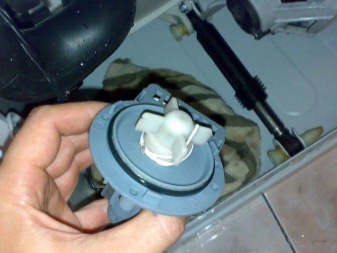
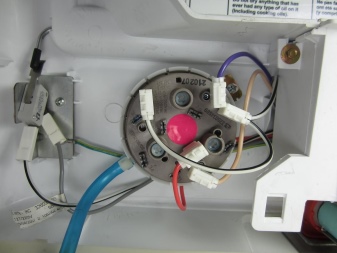
Machine diagnostics and repair tips
Usually, questions about what to do when a leak is detected in the operation of a washing machine arise during its long-term operation without maintenance or due to the carelessness of the owner. For example, a puddle at the bottom of a door is usually caused by items not intended for washing into the drum. Besides, almost any section of the flexible hose can leak.

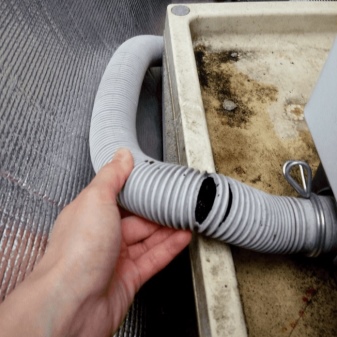
Water collects at the door
Water leaks onto the floor from the sunroof if the seal is not tight. It can be mechanically damaged if it comes into contact with objects that have fallen into the drum. If the seal gets into the rebate of the door when it is closed, there is a risk of rupture. With prolonged use, the sealing of the rubber ring may be broken - it is restored with the help of special compounds.
You can repair small tears or damage to the cuff yourself. An elastic patch made of similar material can be easily attached to rubber glue. For repair, the part is removed from the mount by loosening the clamp. After placing the patch, the cuff is installed so that the repaired area is above the top of the hatch, under the "roof" of the unit.
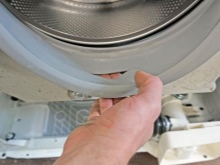

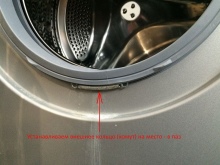
The powder tray is leaking
When liquid flows out of the powder compartment, from under the tray, the cause may be too high pressure of water. Besides, if the detergent does not rinse well, it can gradually clog the hopper itself, the outlet or the filter installed here. Sometimes the problem is that poor quality water leaves calcified deposits inside the powder receptacle.
It is quite easy to eliminate the leak in the tray area. Mechanical blockage can be removed by taking out the powder receptacle and thoroughly rinsing all its parts. The strainer should be especially carefully cleaned. Its contamination most often interferes with the patency of the system.
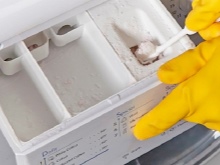
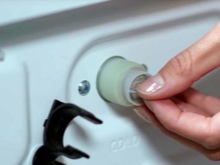
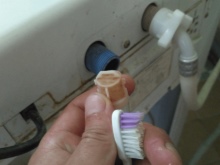
Leaky water intake
If a leak occurs while drawing in water, the machine may have problems with the inlet hose. In case of mechanical damage, its sealing is broken, cracks are clearly visible on the surface. Sometimes, after rearranging furniture or doing other work in the bathroom, the hose is pinched. If no obvious damage is observed along the entire length of the flexible liner, and water still seeps onto the floor, a more thorough diagnosis should be carried out.
The easiest way to identify a damaged area is to disconnect the hose and install a plug on one side. Then it is wrapped with toilet paper, filled with water. A wet spot will appear at the site of damage. If the hose is in order, the problem may be in the too weak connection of the flexible hose to the fitting - it is worth checking it, if necessary, tighten the clamp more.

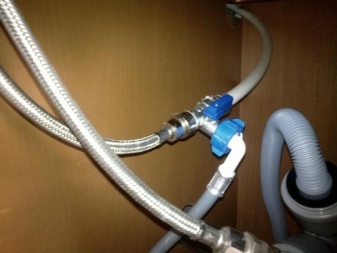
Leakage during washing
If water gets under the washing machine during spinning or rinsing, the drain system is the source of the problem. The filter installed here rarely allows liquid to pass through. Leakage usually occurs after recent cleaning. If the filter is not screwed on tightly, it can leak water when draining. Simply unscrew it and install it in the correct position.
When the machine leaks during washing, a puddle is located in the area of the drain connection, the liquid can remain inside the body or be under the bottom. Depressurization of the joint is usually associated here with vibration impact, cracking of low-grade material. If damage is received precisely in the area of the junction of the pipe with the tank or pump pump, they can only be detected when the machine is completely disconnected from the sewer, after it has been laid on its side.
It is not necessary to repair the damaged part - it is changed, if the tightness is lost, a special adhesive or sealing compound is used.
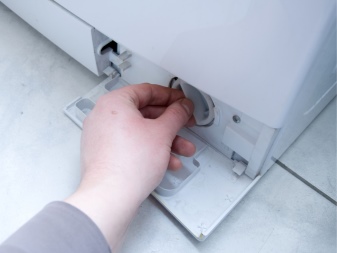
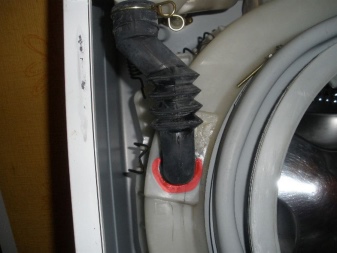
The leak may be due to a breakdown of the cochlea in the pump. If foreign objects enter the drum, they can contact other parts of the system and damage them. Replacing a broken pump is relatively inexpensive and can be easily purchased from specialized stores and installed on your own.
A leak that occurs at any stage of washing and continues throughout the operation of the machine may be associated with a tank breakdown. It ceases to be airtight due to the washing of products with metal inclusions. With a strong impact, the container does not withstand, cracks, and begins to let water through. In this case, you can try to eliminate the leak with a polyurethane sealant by completely disassembling the unit and drying it.
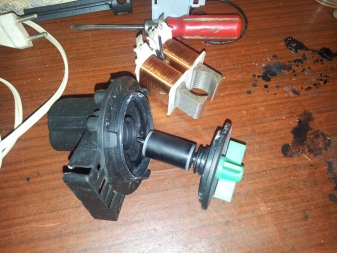
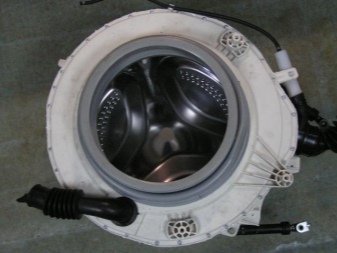
Prevention measures
There are simple preventive measures to protect your washing machine from leaks. You can prevent leakage due to an incorrectly set housing level simply by carefully following the manufacturer's recommendations. If the equipment is installed and connected according to all the rules, most of the inconveniences can be avoided. In addition, other actions can be classified as preventive measures.
- Careful selection of detergents. The use of formulations that are not intended for automatic machines will negatively affect the condition of the equipment.
- Regular rinsing of the powder tray. It needs to be completely cleaned of plaque every 3 months. If this is not done, the blockage will impair the quality of the wash, and the leakage will repeat itself.
- Periodic cleaning of the drain filter. If it becomes clogged, you can expect both a failure of the technique to discharge fluid and a leak caused by an excessive increase in pressure in the system.
- Checking the hose fittings before starting the wash. They need to be examined every time a wash is planned. If there are animals in the house that have access to the bathroom, they can chew on the flexible hoses or pull them out of the mount.
- Regular application of a special sealant mixture. It helps to extend the life of the oil seals and can be used after cleaning and rinsing the gum on the door.
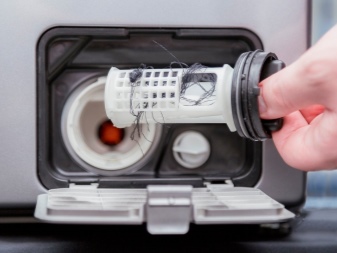
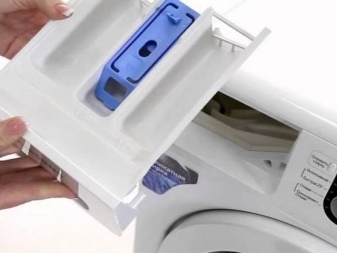
Compliance with preventive measures will prevent the occurrence of leaks. It is important to follow them, regularly self-clean the equipment to help avoid blockages of the system from the inside. In this case, the washing machine will serve as long as possible, without breakdowns and problems.
For the reasons for the leakage of the washing machine, see below.













The comment was sent successfully.